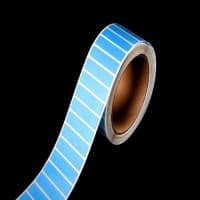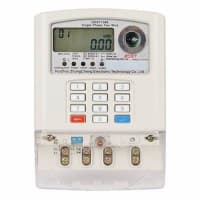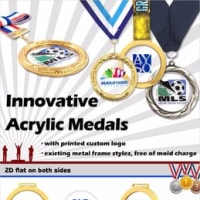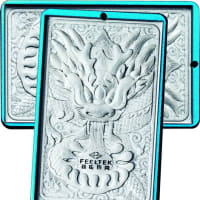The use of plexiglass began in the 1930s and is a synthetic polymer plastic whose main characteristic is optical transparency. The new material plexiglass completely solves the requirements of aircraft development, providing structural simplicity and the required rigidity and safety.
At present, the main characteristics of plexiglass are required in various industries, such as high strength, impact resistance, low weight, high transparency, and easy processing. For small businesses specializing in advertising, design services, architecture, and souvenir products, plexiglass is almost the main structural material.
Processing methods
Plexiglass is perfectly processed by cutting. However, this will produce a large number of small chips. Since the plexiglass melts at a relatively low temperature, the generated chips are easy to sinter and stick to the cutting edge of the tool. This makes it difficult to process and reduces the quality of the finished product. In addition, plexiglass is very sensitive to the sharpness of the tool: the minimum wear of the tool or milling cutter will cause a sharp decline in processing performance.
Another disadvantage of mechanical processing is that plexiglass is prone to contact damage. In addition, this is not only applicable to cutting tools-when the workpiece is fixed on the table, it may damage the surface of the workpiece. However, it is almost impossible to restore the product, such as finishing the polishing, so that the transparent surface is free of white turbidity!
CNC glass cutting machine can provide very high cutting accuracy and seam fineness. Because there is no cutting force, there is no need to install the workpiece, which means that the surface will not be damaged by mechanical clamping. Laser cutting and engraving will not produce chips or dust. The dot effect produced by the high-energy laser on the surface of the plexiglass will only cause the material to evaporate-the generated gas can be easily removed by the machine's standard exhaust system, and will not pollute the environment. The laser processing of plexiglass is carried out at high speed, and the specific processing cost is the lowest.
The CNC glass cutting machine can do all the work with plexiglass: coating large-format workpieces, graphically cutting complex contours, performing surface engraving and even 3D processing!
When choosing laser products for "plexiglass", we need to pay attention to:
1) Laser tube type
Generally, most "budget" models are equipped with laser tubes with mixed gas active media. The characteristics of gas lasers are high radiation stability and low specific energy consumption.
2) The shape and size of the processed workpiece
It is always recommended to take the machine "in large quantities" to the desktop area. The limiting factor here may be the budget and the area where the machine will be located on the production floor. It should be noted that machines with large working areas are more versatile equipment.
3) The power of the laser tube determines the thickness of the workpiece
For engraving plexiglass, 25-60 watts of power is sufficient. Cutting end-to-end workpieces with a maximum thickness of 10 mm will require 60-80 W of power. To process thicker workpieces, as well as parallel processing of workpieces, lamps with a capacity greater than 80 watts are required.
4) Processing speed
The higher the product's productivity, the greater the company's profit. Therefore, when choosing a laser machine, the focus should be on the maximum speed indicator.
5) Warranty support and service
These factors are very important, and equipment suppliers should be selected first, not only through the verification of the machine model sold, but also through high-quality customer service throughout the life of the equipment.
At present, the main characteristics of plexiglass are required in various industries, such as high strength, impact resistance, low weight, high transparency, and easy processing. For small businesses specializing in advertising, design services, architecture, and souvenir products, plexiglass is almost the main structural material.
Processing methods
Plexiglass is perfectly processed by cutting. However, this will produce a large number of small chips. Since the plexiglass melts at a relatively low temperature, the generated chips are easy to sinter and stick to the cutting edge of the tool. This makes it difficult to process and reduces the quality of the finished product. In addition, plexiglass is very sensitive to the sharpness of the tool: the minimum wear of the tool or milling cutter will cause a sharp decline in processing performance.
Another disadvantage of mechanical processing is that plexiglass is prone to contact damage. In addition, this is not only applicable to cutting tools-when the workpiece is fixed on the table, it may damage the surface of the workpiece. However, it is almost impossible to restore the product, such as finishing the polishing, so that the transparent surface is free of white turbidity!
CNC glass cutting machine can provide very high cutting accuracy and seam fineness. Because there is no cutting force, there is no need to install the workpiece, which means that the surface will not be damaged by mechanical clamping. Laser cutting and engraving will not produce chips or dust. The dot effect produced by the high-energy laser on the surface of the plexiglass will only cause the material to evaporate-the generated gas can be easily removed by the machine's standard exhaust system, and will not pollute the environment. The laser processing of plexiglass is carried out at high speed, and the specific processing cost is the lowest.
The CNC glass cutting machine can do all the work with plexiglass: coating large-format workpieces, graphically cutting complex contours, performing surface engraving and even 3D processing!
When choosing laser products for "plexiglass", we need to pay attention to:
1) Laser tube type
Generally, most "budget" models are equipped with laser tubes with mixed gas active media. The characteristics of gas lasers are high radiation stability and low specific energy consumption.
2) The shape and size of the processed workpiece
It is always recommended to take the machine "in large quantities" to the desktop area. The limiting factor here may be the budget and the area where the machine will be located on the production floor. It should be noted that machines with large working areas are more versatile equipment.
3) The power of the laser tube determines the thickness of the workpiece
For engraving plexiglass, 25-60 watts of power is sufficient. Cutting end-to-end workpieces with a maximum thickness of 10 mm will require 60-80 W of power. To process thicker workpieces, as well as parallel processing of workpieces, lamps with a capacity greater than 80 watts are required.
4) Processing speed
The higher the product's productivity, the greater the company's profit. Therefore, when choosing a laser machine, the focus should be on the maximum speed indicator.
5) Warranty support and service
These factors are very important, and equipment suppliers should be selected first, not only through the verification of the machine model sold, but also through high-quality customer service throughout the life of the equipment.



















※コメント投稿者のブログIDはブログ作成者のみに通知されます